In bōjutsu, depending on the teacher, various methods of how to hold the bō are taught. In the Taira lineage of Okinawa, students are supposed to basically adhere to a 3/3 division of the bō and keep both hands fixed in position all the time. I was instructed to close the front hand starting from thumb and index finger. In this way, the front hand is supposed to be tightly fixed, like as if you would use a hammer with one hand.
Of course, a bō is held with both hands, so it cannot be used like a hammer. Due to the wide distance between the hands, when striking, the bō can only penetrate to a certain extent. Often it barely reaches the point of contact, for example the head. This is due to the positions of the back hand, the front shoulder, and the front hand, respectively, as well as the distance between the front and back hands. It is geometry.

Inoue 1981: 170 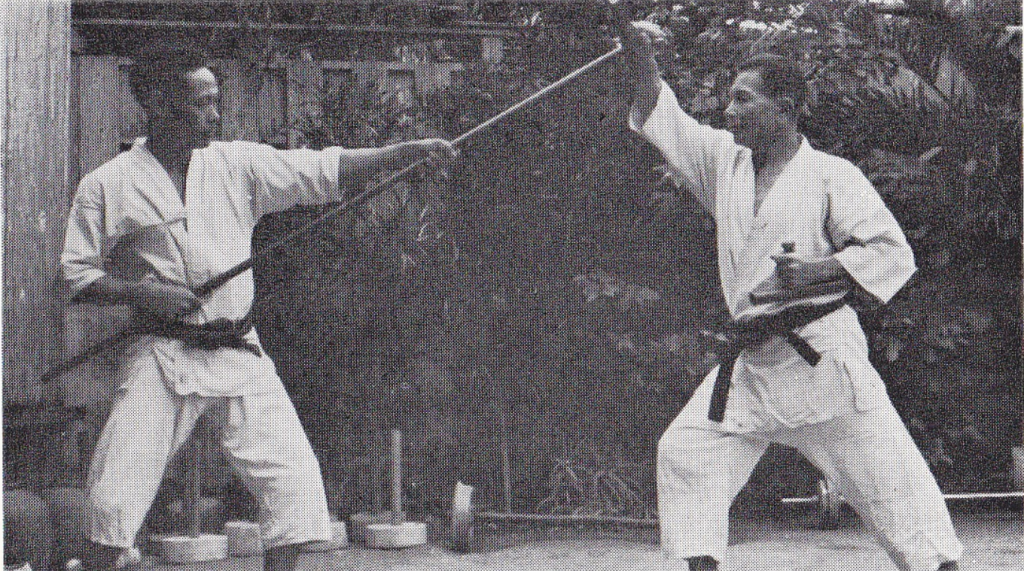
Taira Shinken 1964: 5. 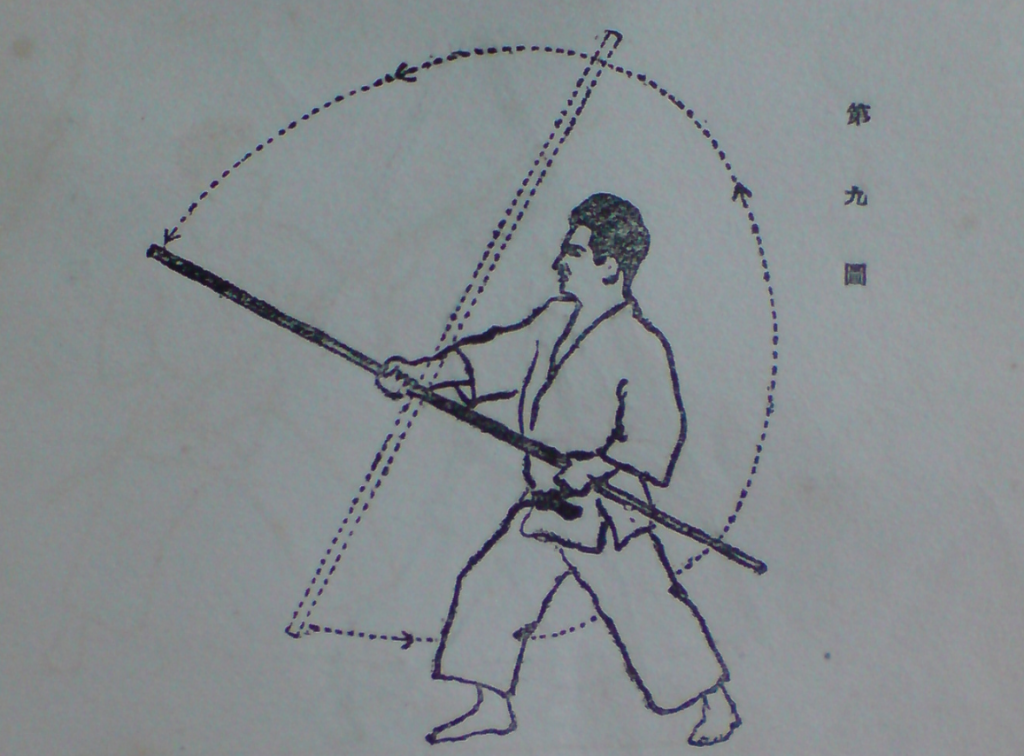
Karate-dō Taikan 1938 
Karate-dō Taikan 1938 
Miki 1930: 170.
Well, you might say, “This is the prescribed form of the kata.” In that case, it is ok.
What about practical application? Of course, you would adapt to the situation as necessary. However, the same method as described above is also used in applications, which are mostly prearranged sets. And because of that, this method of holding the bō has been criticized as being stiff and impractical. While it is safe in prearranged sets of kumibō, you just don’t strike through, even if putting on a show.
There are two basic ways to perform a front strike like that, but they do not address the actual problem itself and are either “clinging to formality” or “workarounds”:
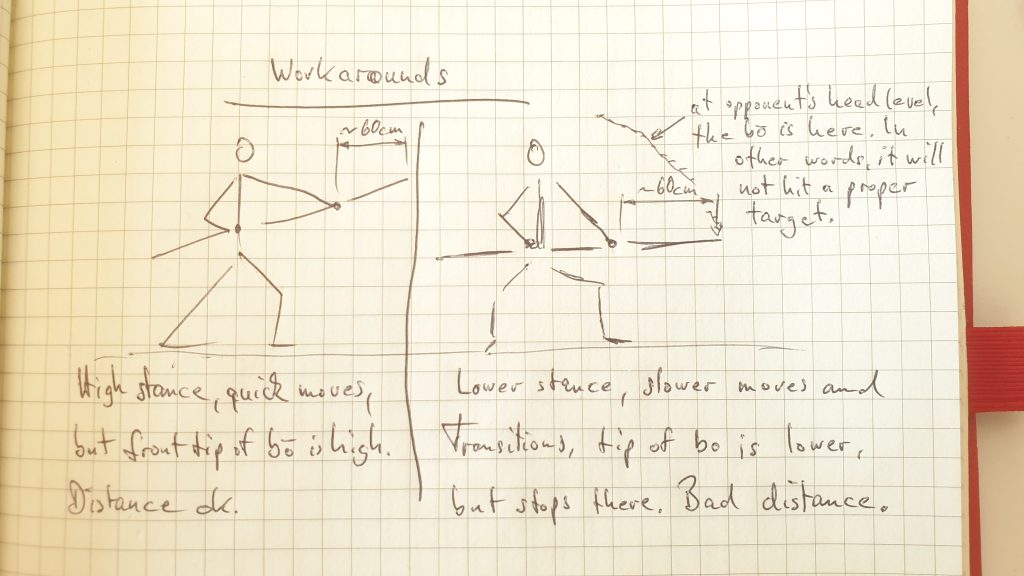
The position shown on the right is often used by Okinawan disciples of the Taira lineage bōjutsu. In this position, while the strike reaches deeper down, the backswing is more difficult to accomplish — or almost impossible unless you’re a yogi or something. Therefore, you have to actively switch to Neko-ashi for the backswing, and then actively move into Kokutsu again to strike. This results in the almost robotic habits often seen among practitioners of this group.
By the way, in kenjutsu there’s a specialized term called “tea cloth squeeze” (chakin shibori). Because the tea cloth is small, the “tea cloth squeeze” is done in a specific way. In a nutshell, when cleaning the wet tea cloth, it is folded three times, and you squeeze the water out of it. You squeeze the fingers from the pinky side, and the index finger is straightened. This is the same as the front hand in kenjutsu: You squeeze the pinky, ring, and middle finger while thumb and index finger are relaxed.

But in kenjutsu, the back hand is also assigned a task. Basically, there is a push-pull action done by both hands. It allows a full downward strike while at the same time allow to stop a downward in an instant. Different from many bōjutsu, it is not the geometry and the front hand that stop the strike, but a push of the back hand in combination with a pull of the front hand.
This is what my sword sensei, Hamamoto Hisao Sensei, teaches and refers to as “Te no Uchi”.
BTW, when used in bōjutsu, the “tea cloth squeeze” allows the front hand to glide along the bō, thus reducing the distance between the hands, and as a result, you can strike through.
For example, we have seen the “tea cloth squeeze” being used in many of the Yamanni-ryū bōjutsu. Most Yamanni-ryū bōjutsu schools today came from Kishaba Chōgi. While basically all of his students do the “tea cloth squeeze” – or at least point the index finger somewhere – most of them do not use the full “Te no Uchi”.
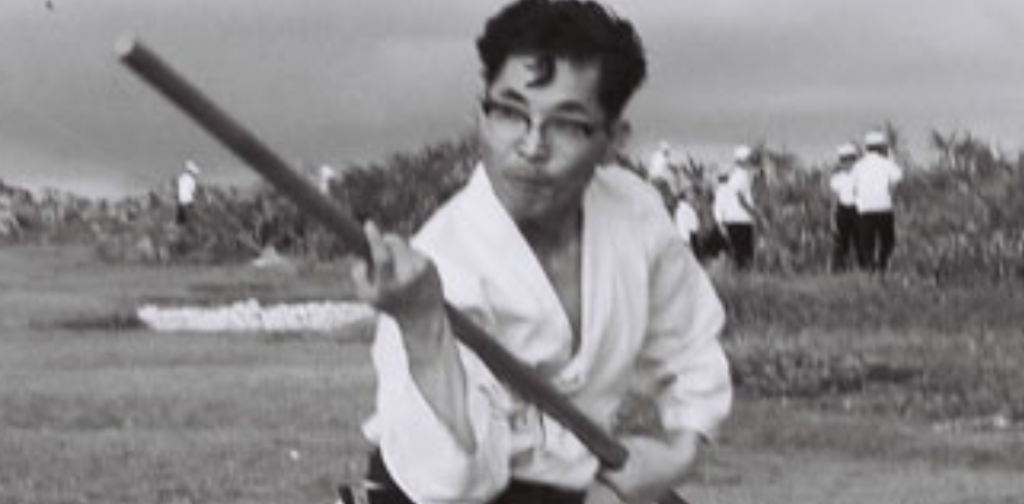
Higa Seitoku sensei, who received a certificate by Chinen Masami. 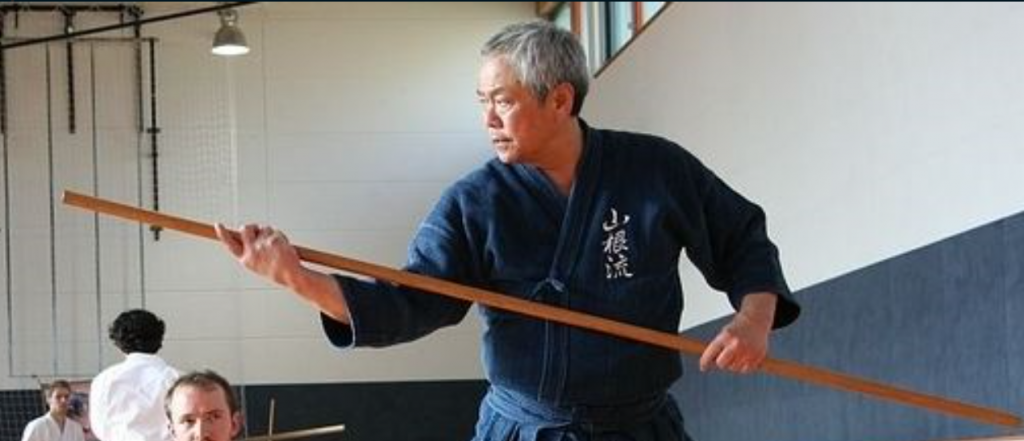
Toshihiro Oshiro sensei, a bojutsu student of Kishaba Chogi.
Last year, while on Okinawa, I visited one Yamanni-ryū bōjutsu sensei for practice. That specific sensei taught two methods of striking:
- 1.) normal strike with “tea cloth squeeze”, and
- 2.) the “Te no Uchi” version (including “tea cloth squeeze” and push-stop of the rear hand). This strike version was done like the “Te no Uchi” of kenjutsu, just adapted to the bō.
I also visited another direct student of Kishaba Chōgi. That sensei then told me that Kishaba Chōgi never did the “sword stop” (= “Te no Uchi”).
In other words, new methods from other martial arts such as kenjutsu are assessed and introduced into existing schools of bōjutsu. Or was it originally in there?
© 2020, Andreas Quast. All rights reserved.
